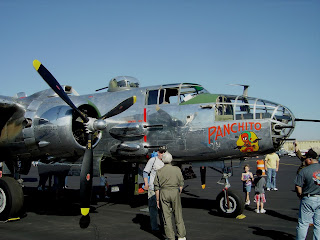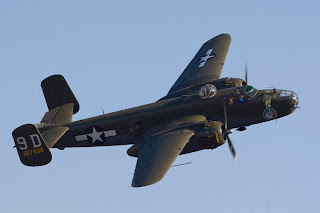Don't clip my wings
85 Year Old completes assembly of RV-12
http://www.theunion.com/article/20111101/NEWS/111039973/1056&parentprofile=1056
I'll never forget the first time Harold Wolfe took me flying in his little Cessna 152 airplane. I was a little nervous because the plane was so small and Harold was ... well ... so old ... and I had to ask the question.
“So, Harold,” I began, not knowing how to phrase the question so he wouldn't be offended. “If something happens to you up here — like a heart attack, for example — what should I do?”
At that point we were flying above Grass Valley and I could see nothing but trees below.
Without missing a beat, Harold said, “Head for Beale Air Force Base because the runway is so big you could land this thing sideways.” Then he pointed to the Sutter Buttes, so I'd generally know which way to head and showed me where to find the Beale frequency on the radio so they wouldn't shoot me down for trying to land sideways on a military base.
That was maybe six years ago, when Harold Wolfe was only 79. Since then he's managed to build his own airplane and he took me for a little ride in it last week, a couple of months after his 85th birthday.
Think about that for just a minute. You're Harold Wolfe. You're almost 80. Your kids have been out of the house for 30 years and cruise ship companies are sending you brochures every week with offers to Alaska and beyond.
What to do?“
I know,” said Harold. “I think I'll build an airplane with my own two hands.”
Just what you might expect from an engineer who built his own house on the weekends.
Harold was born in 1926, just 23 years after the Wright Brothers “Flyer” made aviation history. “When I was 4, 5 or 6 my dad paid for an airplane ride for both of us,” he told me. “That planted a seed for my desire to fly. From then on, I built airplane models from kits using balsa wood, banana oil and tissue paper — every kind of plane I could get my hands on.
”Harold took his first flying lesson on Oct. 10, 1943 and soloed in a J3 Cub on Independence Day in 1946. “I got my private pilot's license on Sept. 12, 1947,” he recalled. “It took me four years to get my license since I paid for the lessons with the money I earned from a paper route.
”Note to children — if you are reading this: Harold didn't ask his parents for the money. He got a paper route and paid for the lessons himself, which is where the whole “value proposition” comes in. Your own hard-earned money can be a wonderful motivator when it comes to determination. It's a concept that seems to be getting lost in a world of entitlements, as in, “I'm entitled to your money.”
Unfortunately, life got in the way of Harold's flying enjoyment. “I stopped flying in 1948 because college, work, career and family got in the way,” he said. For the next 47 years, Harold would instead work to build a successful career that allowed him to raise a beautiful family.
But the desire to fly continued to burn inside Harold and in late 1995 he got the chance to manage the Nevada County Airport, rekindling that fire.
“I started taking lessons from John Bauer, a flight instructor at the airport,” Harold remembered. “He was somewhat surprised to learn that I already had a private license.”
The lessons began on May 24, 1996, and Harold would solo for a second time five months later after a 48-year absence.
“I've been flying steadily ever since and the enjoyment is still there,” he told me. “Even after 1,300 hours of flight time.”
Bauer would eventually sell Harold an interest in his Cessna, which they used as a trainer. Bauer was later killed in a tragic car crash and Harold purchased the remaining interest in the plane.
So why did Harold decide to build his own experimental RV-12? “It was just to satisfy a lifelong dream,” he said. “Plus, the RV-12 is classified as a Light Sport Aircraft and, as such, the FAA rules allow you to fly these planes using your driver's license as a replacement for the usual medical exam required by the FAA. At my age I could never be sure I would continue to meet the medical requirements, so the RV-12 gave me an easy out.”
While I'm not sure building your own plane can be described as an “easy way out,” Harold's reasoning probably explains why there are so many experimental planes at the airport. Flying and learning to fly is a lot more expensive than it used to be and the median age of pilots in this “older” county of ours is growing by the year. For proof we need look no further than the number of empty hangars today and ... no ... it's not just the economy.
There just aren't enough young people who have an extra $10,000 or so it takes to get a pilot's license today.The RV-12 came in six different boxes, or “kits.” The first “kit” arrived at Harold's garage on Aug. 1, 2009. This past May he moved everything to his hangar and an FAA inspector signed off on the plane July 8, almost two years after Harold began the build. “
On Aug. 23, one day after my 85th birthday, I made my first flight in the RV-12,” he said. “When I started building the plane, I wasn't sure my health would remain sound long enough for me to actually fly it.”
So what's next?
“I suppose I need to stay healthy, fly my plane and catch up on all the ‘honey do's' I set aside while building the plane,” said Harold. “It would also be fun to repeat our 2007 flight along Interstate 80 into Nebraska and then Missouri, Illinois, Wisconsin, Iowa and back to California.”










